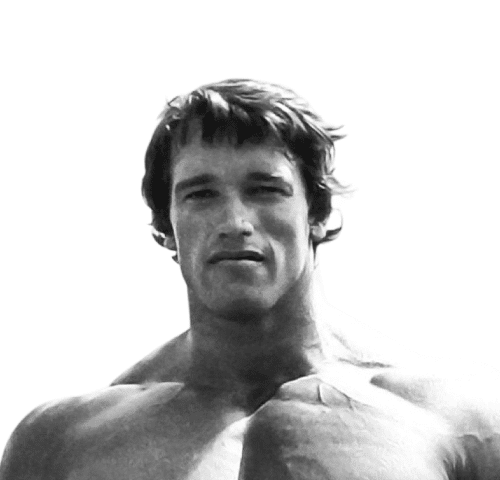Conor McGregor’s Workout Routine in 2025

The Training Style That Built a Champion
Conor McGregor is known for his intense training and dedication to staying fight-ready year-round. From striking drills to strength work, his fitness plan covers a wide range of movements to keep him sharp in the cage. This article takes analyzes the Conor McGregor workout routine and the different exercises that help him maintain his performance.
- Last Updated: December 2, 2025
-
-
Conor McGregor Workout Philosophy
Conor McGregor has never been one to stick to a rigid training schedule. Instead, he’s developed a fluid approach that allows for creativity, mental focus, and physical adaptability depending on what his body and mind need.
- Freeform early training style: In his early rise through the UFC, McGregor preferred training when inspiration struck, sometimes hitting the gym in the middle of the night. He believed this spontaneity gave him an edge by keeping his mind sharp and avoiding burnout from repetition.
- Avoiding repetition: Rather than sticking to a fixed set of drills, he constantly experimented with new movement patterns, martial arts techniques, and conditioning styles. This made every session feel fresh and helped him improve faster across multiple areas.
- All-day mindset: McGregor didn’t separate training from daily life. For him, fighting wasn’t limited to sparring or lifting, it was a full-time commitment that extended to how he ate, rested, and thought. He often said he “lives and breathes” training.
- Training without structure led to burnout: Before his first bout with Nate Diaz, his intense but unstructured workouts caught up to him. The lack of rest and constant high output led to overtraining, leaving him physically drained and unable to perform at his best.
- Shift to a more structured plan: After that loss, he worked on creating a more consistent training schedule. Rather than waiting until he “felt like it,” his new routine included planned sessions with specific goals for endurance, strength, and recovery.
- Extra cardio sessions: He started focusing more on endurance through activities like treadmill running, rowing, and biking. These additions helped him build the stamina required for five-round fights and gave him an edge in later rounds.
- Balance of instinct and structure: McGregor didn’t abandon his natural training instincts—he simply added layers of organization around them. This allowed him to train smarter, reduce the risk of injury, and ensure he peaked at the right time before a fight.
- Mental focus as a core component: He emphasizes the mental side of MMA just as much as the physical. His belief is that mindset is what separates great fighters from good ones, and he credits his mental strength for many of his victories.
- Training with variety: He regularly changes his workouts to keep his body adapting and to prevent opponents from reading his style. This includes a wide mix of cardio, strength work, mobility, and martial arts drills across different disciplines.
Conor McGregor’s workout routine has evolved with time, going from completely instinctive to a smarter mix of structure and variety. This shift has helped him maintain peak performance while staying motivated and injury-free.
Some people seem to think MMA training is all about lifting weights and sparring. They don’t realize fighting is a mental exercise. The most important thing is mindset – it’s my belief that makes me stronger than any opponent.
-
Early Morning Cardio
His day often begins with movement before anything else. His morning sessions aren’t about pushing limits but about setting the tone, getting the blood flowing and sharpening his focus for the day ahead.
- Hydrates immediately: As soon as he wakes up, McGregor drinks a large glass of water to rehydrate his system after hours of sleep. This simple habit helps kickstart his metabolism and supports better performance throughout the day.
- Stretching to loosen up: He follows hydration with a series of light stretches and mobility drills. These movements help improve flexibility, increase circulation, and ease any tightness that might have built up overnight.
- Fasted cardio sessions: McGregor often completes 30 minutes of cardio before breakfast, usually opting for a steady run, light cycling, or shadowboxing. Doing this on an empty stomach helps wake up his system and supports fat metabolism without being too taxing.
- Consistency over intensity: His focus in the morning is not on pushing to failure. Instead, the goal is to stay consistent with low-impact movement that builds endurance, maintains sharpness, and prepares the body for later sessions.
- Post-workout breakfast: After his morning movement, he refuels with a breakfast high in protein, clean carbs, and healthy fats. This meal supports muscle repair and gives him lasting energy for the rest of the day.
This daily habit is a key part of his overall training routine, reinforcing the consistency and balance that define the Conor McGregor exercise program.
The first thing I do in the morning is stretch and drink water.
-
Technical Training
McGregor typically begins his first main training session of the day in the late morning, around 11 am. This block of time is focused on sharpening his fighting style, not through brute effort, but through focused repetition, movement drills, and tactical sparring.
- Skill-based training focus: These sessions revolve around developing specific areas of his MMA game. Depending on the day, he may focus on boxing pad work, jiu-jitsu rolling, Muay Thai combos, or takedown defense and grappling transitions.
- Pad work and drilling: He regularly drills techniques like striking combinations, clinch work, and movement patterns. This helps him refine mechanics while also improving speed, timing, and reaction under pressure.
- Live sparring with coaches: He often spars lightly with his coaches or training partners to test techniques in a controlled setting. These sessions mimic real fight scenarios, helping him stay sharp without overexerting.
- Practicing unorthodox techniques: He’s known to drill kicks influenced by Taekwondo or Capoeira, using his creativity to stay unpredictable in the cage. These movements are trained with intent and purpose, not just flash.
- Light to moderate intensity: Technical training is kept at a sustainable pace to avoid fatigue while still building skill. This allows for high frequency without risking burnout or loss of focus.
- Mental focus during sessions: He values “intelligent” training instead of mindlessly going through the motions.
This type of training is an essential part of Conor McGregor’s workout routine and plays a big role in maintaining the depth and variety seen across his MMA training schedule.
-
Afternoon Recovery
After intense training sessions in the morning, recovery becomes the focus. This midday period helps McGregor recharge physically and mentally so he’s ready for anything that comes later in the day.
- Nutritious lunch: He eats a well-balanced meal packed with lean protein, complex carbs, and vegetables. This helps restore energy levels, refuel his muscles, and support overall recovery after the first session.
- Midday rest: He often takes a short nap or rests during this break. Even 20 to 30 minutes of downtime can improve alertness, promote muscle repair, and enhance performance for his second workout.
- Physiotherapy and body care: During intense training phases, he may work with a physiotherapist or massage therapist to address soreness, tightness, or injury prevention.
- Recovery tools: Ice baths, compression gear, and stretching sessions are part of his routine as needed. These tools help reduce inflammation, improve blood flow, and support quicker recovery between sessions.
This balance between hard training and smart recovery is one reason his workout plan continues to keep him performing at a high level, both in and out of the gym.
-
Strength & Conditioning Workout
McGregor typically ends his day with a second session aimed at pushing his physical limits. While his mornings focus on technique, the evenings are about building raw power, stamina, and all-around athletic performance.
- Weight and resistance training: He uses exercises like deadlifts, squats, or kettlebell work to build strength. These movements target major muscle groups and help increase overall power output.
- Calisthenics for control and strength: On certain days, he’ll focus on a full-body calisthenics circuit, using bodyweight movements like pull-ups, dips, and push-ups to stay lean while maintaining explosive strength.
- Cardio and endurance work: Some sessions involve long-distance running, cycling, or other endurance-based training to improve heart health and oxygen capacity.
- Conditioning circuits: He includes high-intensity interval training or functional circuits, which often combine sprint work, agility drills, and plyometrics to keep his conditioning sharp.
- Heavy bag drills: On some evenings, he sharpens his striking with the heavy bag. This helps develop punching power, rhythm, and stamina, especially during fight camps.
- Deliberate training split: He separates skill-based sessions from physical conditioning to avoid overlap. This two-a-day split gives each type of training the focus it needs without compromising performance.
This evening session rounds out the structure of the Conor McGregor strength workout, helping him stay fast, powerful, and ready to compete at the highest level.
-
Evening Routine
After a full day of training and physical exertion, recovery takes center stage in McGregor’s evenings, around 7 pm. This time is dedicated to rest, refueling, and allowing his body to bounce back for the next day’s demands.
- Dinner for recovery: His evening meals are centered around lean protein like steak, chicken, or fish to support muscle repair. These are paired with vegetables for vitamins and minerals, and complex carbs like sweet potatoes or rice to restore energy and promote overnight recovery.
- Staying hydrated: He continues drinking water into the evening to aid muscle function, flush out toxins, and prevent dehydration during sleep. Proper hydration also helps reduce muscle cramps and fatigue from the day’s sessions.
- Evening relaxation: After dinner, he spends time unwinding, usually by relaxing with family or engaging in calming activities. This helps him lower cortisol levels and mentally transition away from the intensity of training.
- Recovery tools: When soreness sets in, he may use tools like compression boots, massage guns, or stretching routines. These methods help improve circulation and reduce inflammation from back-to-back training sessions.
- Advanced recovery methods: On occasion, he uses more advanced recovery options like cryotherapy to target inflammation, underwater treadmills for low-impact movement, or altitude chambers to enhance endurance. These methods are often used during fight camps or high-volume training phases.
- Quality sleep: He makes sleep a top priority, aiming for deep, uninterrupted rest. Quality sleep boosts muscle growth, balances hormones, and supports memory and focus, essential parts of recovery for any athlete.
This type of recovery-focused evening is an important part of the Conor McGregor diet and exercise routine, giving his body the time it needs to recover and stay at peak performance.
-
Supplements to Support Conor McGregor’s Workout Routine
A workout routine like McGregor’s pushes both the mind and body, requiring stamina, strength, and quick recovery. While a balanced diet comes first, certain supplements can support your training efforts and help you get more from each session. If you’re following a routine inspired by McGregor’s intensity, these additions can help you keep up.
- Creatine for explosive strength: Creatine helps supply energy to your muscles during short bursts of intense effort, like heavy lifts or takedowns. Research shows it can increase muscle power, enhance sprint performance, and improve overall training volume, especially useful in strength-based sessions.
- Whey protein for muscle recovery: After long training days or intense sparring rounds, protein helps repair damaged muscle fibers. Whey absorbs quickly and provides all essential amino acids, supporting muscle growth and reducing soreness between workouts.
- Beta-Alanine for endurance: This amino acid helps buffer acid buildup in the muscles during high-rep or long-duration exercises. Studies have shown it can delay fatigue in both aerobic and anaerobic workouts, which is helpful during circuits or extended sparring.
- Electrolytes for hydration: During long sessions or sauna use, your body loses sodium, potassium, and magnesium through sweat. Replenishing these minerals supports muscle contractions, reduces cramping, and helps you recover faster between workouts.
- Omega-3s for joint health and inflammation: Found in fish oil, omega-3 fatty acids may reduce inflammation from repeated high-impact training. They can also support joint mobility, brain function, and even heart health for those putting in long hours at the gym.
- Vitamin D for bone strength: Strong bones support intense training like wrestling or striking. Vitamin D plays a major role in calcium absorption and has been linked to better muscle function, especially in athletes who train indoors or during colder months.
- Magnesium for muscle function: Magnesium is involved in hundreds of biochemical reactions in the body. It helps with energy production, nerve function, and muscle recovery, and may reduce cramping or soreness after heavy sessions.
These supplements aren’t meant to replace hard work, they’re there to support it. With the right mix of recovery tools, nutrition, and consistency, you’ll be better equipped to handle tough training sessions and make steady progress over time. For anyone interested in a deeper look at the supplement routine often linked to him, our Conor McGregor Supplement List article covers it in more detail.
-
Weekly Workout Routine
McGregor’s training rhythm is built around consistency and intensity, with a weekly plan that balances hard sessions with lighter recovery work. He adapts his schedule slightly depending on fight camps, but many core elements remain steady week to week.
- Monday: Focuses on calisthenics-based strength work, with bodyweight exercises forming the base. He adds cardio drills and core movements to kick off the week with intensity and full-body engagement.
- Tuesday: Involves high-effort endurance training, often structured as circuits. These sessions challenge his stamina through movements that build aerobic and anaerobic capacity using a mix of timed bodyweight exercises.
- Wednesday: A repeat of calisthenics and cardio, but with more focus on midsection strength. Core routines are often added in combination with light strength and movement work to keep the body balanced mid-week.
- Thursday: Returns to circuit-style conditioning, similar to Tuesday, but with shorter rest periods to push anaerobic endurance. These sessions often involve more explosive movements and pace variations.
- Friday: Another round of calisthenics with an emphasis on strength and full-body activation. He also mixes in cardio conditioning and mobility work to wrap up the main training week.
- Saturday: Includes low-intensity training like swimming, light mitt work, flexibility routines, or movement drills. These sessions help with recovery while keeping the body mobile and sharp.
- Sunday: No physical training. This day is dedicated to recovery, allowing his muscles and nervous system to recharge for the following week.
McGregor’s weekly workout split is designed to keep him performing at a high level while avoiding burnout. The structure of his schedule supports both endurance and power, making the his workout routine one of the most complete in combat sports.
-
Warm-Up
McGregor doesn’t treat warm-ups as optional. They are a built-in part of his training schedule, aimed at helping him train harder, stay loose, and prevent unnecessary injuries. Each session starts with a methodical approach to mobility and movement, no matter the day’s workout.
- Dynamic stretching drills: He begins with one-minute movement-based stretches like Muay Thai knees, leg swings, hip circles, shoulder rotations, and neck bridges. These exercises prepare the joints, wake up the nervous system, and gently increase heart rate without overexertion.
- Targeted static stretches: After dynamic work, he transitions into static stretches and holds them for around 30 seconds. Movements like back rolls, lying leg stretches, seated butterfly stretches, and sit-back shoulder stretches are used to lengthen muscles and improve range of motion.
- Daily mobility training: He makes stretching and mobility a daily priority. He believes it helps keep his body “springy” and prevents tightness that could lead to injury during high-output training or fights.
- Animal-based movement drills: His routine often includes locomotion conditioning—drills inspired by animal movement patterns. These include the Duck Walk (for knees), Horse Walk (for groin and stance work), Lizard Walk (for hip and core control), and Ostrich Walk (for hamstring mobility).
- Injury prevention focus: These drills are not for show. Each movement helps strengthen key joints and muscles that take on stress during grappling, striking, or wrestling. For example, the duck walk helps relieve knee strain, and the lizard crawl improves hip function.
- Built for long-term performance: As he’s added more fight years to his career, he has doubled down on warm-ups. The consistent use of these drills has helped him maintain mobility, recover faster, and stay flexible despite years of high-impact training.
This warm-up routine is a core piece of his workout program. It keeps his body responsive and ready for whatever his training or competition demands next.
-
Bodyweight and Functional Strength Exercises
Instead of relying on heavy machines, Conor McGregor builds real fight-ready strength with functional training that mimics how he moves inside the Octagon. His routines are built to improve speed, balance, coordination, and overall body control. Whether he’s climbing ropes or slamming the heavy bag, every move is meant to carry over into real fight situations.
- Pull-ups and dead hangs: These are central to improving upper-body pulling power, bicep control, and grip strength. Dead hangs also condition the shoulders and arms for clinch situations while decompressing the spine. He often completes multiple rounds with varying grips to build strength endurance and real-world function.
- Push-ups and muscle-ups: Traditional push-ups target the chest, shoulders, and triceps, while muscle-ups demand full upper-body coordination and explosive core power. McGregor does them in high-rep sets to develop pressing strength and transitions useful in grappling and striking exchanges.
- Air squats and pistol squats: These movements train balance, hip mobility, and knee stability. Pistol squats challenge each leg individually, mimicking fight scenarios that require strong footing while moving or defending takedowns. They also help prevent imbalances that could lead to injury.
- Handstands and push-up variations: He uses handstands not only for shoulder control but to push his body into unfamiliar positions, improving spatial awareness and posture control. He adds variations like handstand push-ups and leg raises to build core strength and shoulder endurance under tension.
- Burpees and jumping squats: These fast-paced exercises combine strength and cardio, taxing the entire body. He uses them to condition his body for quick transitions, explosive scrambles, and energy recovery under fatigue, much like what’s needed in the final rounds of a fight.
- Single-leg deadlifts: This movement strengthens the hamstrings, glutes, and lower back while testing balance and body awareness. He often uses dumbbells or kettlebells and slows down the tempo to maximize control, which helps him generate power from less stable positions.
- Lunges and weighted squats: He uses variations like walking lunges and front-loaded squats to activate the legs through full range-of-motion. These movements support his kicks and help absorb force during grapples or ground exchanges, while also boosting lower-body stamina.
- Ground-and-pound drills: McGregor simulates top control by throwing punches, elbows, and hammerfists into a heavy bag on the floor. This builds shoulder and core endurance, and reinforces his ability to maintain pressure on an opponent in real fight conditions while improving hip mobility and strike accuracy.
- Bodyweight circuits: He cycles through bodyweight exercises like muscle-ups, burpees, squats, and push-ups with minimal rest, forcing his body to maintain strength under fatigue. These fast-paced circuits improve recovery speed and simulate the cardio demands of actual MMA bouts.
- Functional weightlifting: While not focused on traditional bodybuilding, he uses tools like kettlebells, dumbbells, and medicine balls to challenge his coordination and strength. These movements engage multiple muscle groups, offering fight-specific strength without sacrificing mobility.
His mix of calisthenics, gymnastic drills, and free weight exercises helps him stay lean, explosive, and agile in the cage. This part of the Conor McGregor workout plan shows how strength and skill go hand in hand for top-level performance.
It’s always a mix. But for strength and power, I use a lot of free weights.
-
Cardio and Endurance Training
To stay competitive at the highest level, Conor McGregor puts a strong emphasis on building serious cardiovascular endurance. His training isn’t just about speed or power, it’s also about pushing his gas tank so he can perform at a high level throughout every round of a fight. Instead of sticking to one type of conditioning, he uses a mix of methods to keep things fresh and effective.
- Roadwork and long-distance running: He includes outdoor runs and interval sprints to build aerobic capacity and leg endurance. This type of cardio builds mental toughness and simulates the demands of a long fight.
- Treadmill and bike sessions: He rotates between treadmill runs, cycling, and air bike sessions to keep his training well-rounded. Each targets a different muscle group while pushing his cardiovascular system.
- Rowing machine workouts: These full-body cardio sessions help improve stamina while strengthening both the upper and lower body. They’re especially useful when recovering from injuries or limiting impact on joints.
- F.A.S.T. program intervals: His training is built around the Fighter Anaerobic/Aerobic System of Training (F.A.S.T.) system, which balances high-intensity intervals like sprints or HIIT circuits with steady-state endurance such as long runs or extended bike rides.
- Weekly split-based sessions: On certain days, McGregor adds circuit-style endurance drills like striking combinations, jump rope, and bodyweight conditioning to test both his strength and his cardio under fatigue.
- Recovery-focused cardio: On light or recovery days, he’ll choose low-impact methods such as swimming or long walks, which allow his body to stay active without unnecessary stress.
- High-tech endurance tools: His training often includes advanced equipment like altitude chambers, which simulate high elevations, and underwater treadmills, which protect joints while maintaining fitness.
- Cryotherapy for recovery: After tough sessions, he uses cold therapy to reduce inflammation and speed up recovery so he can maintain consistency in his training schedule.
- Endurance variety for long-term gains: Activities like hiking, triathlon-style training, or beach runs not only help with stamina but also keep him motivated and engaged during tough camps.
Conor McGregor’s cardio approach is a key part of his training routine. The mix of long sessions, intense bursts, and modern tools gives him the stamina to push through later rounds and stay dangerous until the final bell.
-
MMA Skills Training
Conor McGregor’s workout routine goes far beyond physical fitness. His fight preparation includes a detailed mix of technical drills, live sparring, and strategy work. He splits his sessions across different fighting disciplines to sharpen every area of his game and stay competitive in all aspects of mixed martial arts.
- Striking drills and pad work: His striking sessions focus on punch combinations, timing, and movement. Using pads, he refines speed and accuracy, especially his powerful left hand. He also works on spinning and hook kicks to round out his stand-up game.
- Kickboxing and Taekwondo sessions: To stay unpredictable, McGregor practices various kicking styles. He often spars to test unorthodox kicks and improve his ability to switch up attacks mid-fight.
- Traditional boxing practice: When preparing for boxing-heavy matchups, he trains in old-school boxing drills. He builds rhythm and defense by focusing on jab setups, head movement, and long rounds of glove work.
- Grappling and submission training: He improves his takedown defense and ground skills through Brazilian Jiu-Jitsu and wrestling. He drills techniques like double-leg shots, guard passes, and escapes during these sessions.
- Takedown entries and wrestling technique: He spends time on cage wrestling and takedown chaining. Drills involve sprawl work, body locks, and scrambles to sharpen transitions between standing and ground positions.
- Live rolling with BJJ partners: To keep his grappling instincts sharp, he spars regularly with skilled grapplers. These sessions build cardio, sharpen awareness, and help him apply submissions under pressure.
- Fight simulation sparring: Hard sparring is part of his fight camp, especially as a match gets closer. He mimics opponents’ fighting styles and runs through specific game plans during these rounds.
- Technical sparring for timing: Light contact sparring lets him test techniques in real-time while minimizing injury risk. He fine-tunes reactions and defensive skills in these controlled exchanges.
- Scenario-based drills: He rehearses situations like clinch breaks, cage escapes, or defending from mount. These focused drills help him stay ready for unexpected turns in a fight.
- Split training sessions: Rather than mixing everything into one practice, he separates his workouts. Mornings are often reserved for one skill area, while evenings focus on strength or conditioning.
- Mental conditioning: He also builds his mindset through visualization and positive reinforcement. He treats each drill as a chance to learn, building confidence alongside physical skill.
Each part of his workout program plays a role in keeping him sharp, well-rounded, and fight-ready. From technical drills to mental prep, it’s a complete system that covers every area of mixed martial arts.
-
-
References
Conor McGregor’s UFC Diet & Workout Plan
Conor McGregor ‘Knockout’ Workout
Conor McGregor Road House Workout & Diet Plan
How To Get A Body Like Conor McGregor
Photo Credit: Conor McGregor during the UFC 189 World Tour Aldo vs. McGregor event in London, photographed by Andrius Petrucenia on March 30, 2015. Shared under the Creative Commons Attribution-Share Alike 2.0 license.





